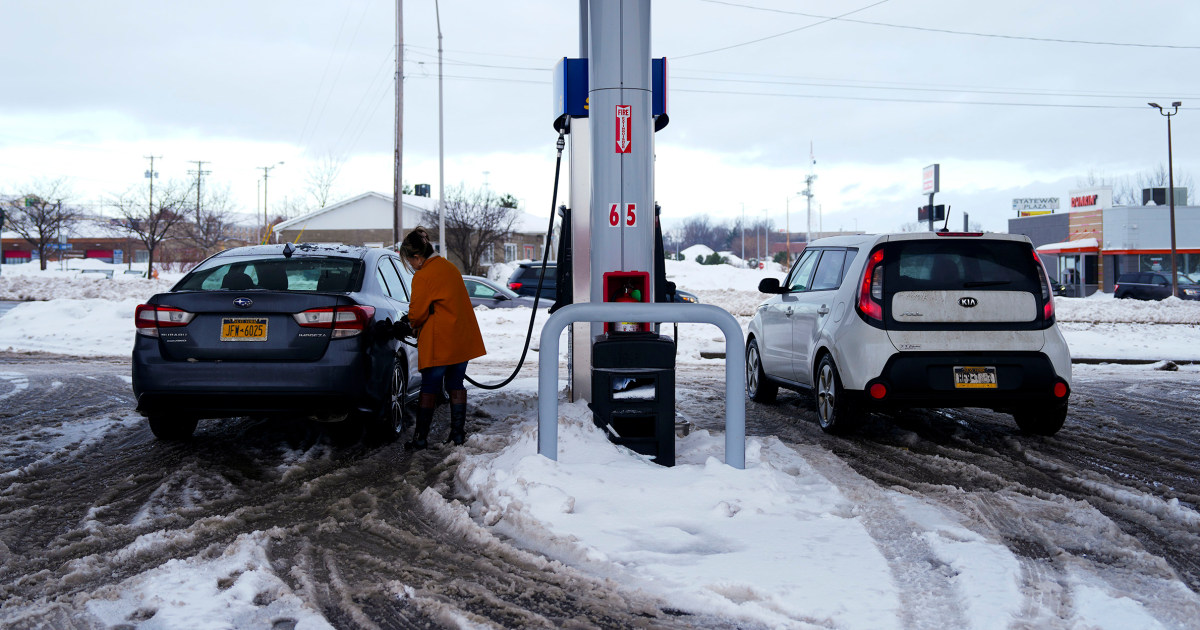Introduction
As winter settles in, the onset of freezing rain and snowfall has transformed Monday morning into a challenging commute for many. Reports indicate that overnight precipitation has created hazardous conditions across the area, prompting safety concerns among commuters and local authorities. With the temperature hovering around freezing, a delicate mix of snow and ice has created a perfect storm for treacherous driving conditions. This article delves into the implications of this weather phenomenon, explores expert recommendations for safe travel, and examines the broader impacts of winter weather on communities.
The Impact of Overnight Snow and Freezing Rain
Overnight, the region experienced a significant accumulation of snow coupled with freezing rain, resulting in a slippery glaze over roadways. According to meteorologists, the combination of these elements can lead to unique challenges, as snow can insulate the ice beneath, making it less visible and more dangerous.
Weather Forecast and Current Conditions
The National Weather Service has issued a winter weather advisory, predicting continued snowfall throughout the morning, with expected accumulations ranging from 1 to 3 inches. This will be compounded by potential ice accumulations of up to a quarter of an inch, particularly in areas less exposed to sunlight.
- Snowfall rates of 1 inch per hour in some regions.
- Ice forming on sidewalks and untreated surfaces, creating slip hazards.
- Potential for power outages as ice weighs down tree branches and power lines.
Expert Warnings and Commuter Advice
Local traffic officials and weather experts are urging commuters to exercise extreme caution. “The roads are going to be slick, and visibility may be reduced,” said John Smith, a meteorologist with the National Weather Service. “If you don’t have to travel, it’s best to stay home.” Here are some key recommendations for drivers:
- Reduce Speed: Driving at slower speeds can help maintain control on icy surfaces.
- Increase Following Distance: A longer distance between vehicles allows for more reaction time.
- Avoid Sudden Movements: Abrupt steering or braking can lead to loss of traction.
- Check Vehicle Readiness: Ensure that tires are in good condition and that windshield wipers and defrosters are functioning properly.
Broader Implications of Winter Weather
The immediate impact of winter weather extends beyond commuting challenges. Communities often face a range of secondary effects during such events, from economic disruptions to public safety concerns.
Economic Impact
Winter storms can lead to significant economic consequences. According to a study by the American Automobile Association (AAA), severe winter weather results in billions in economic losses each year due to vehicle accidents, property damage, and lost productivity. Businesses may experience reduced foot traffic, and delivery services can be delayed, impacting supply chains.
Community Preparedness and Response
Local governments typically prepare for winter weather events by mobilizing snow removal crews and salt trucks. However, the effectiveness of these efforts can vary. Residents are encouraged to stay informed about local emergency services and resources available during winter storms, such as:
- Community warming centers for those without heat.
- Emergency contact numbers for local road services.
- Updates from local news and weather stations regarding road conditions and safety advisories.
Safety Measures for Home and Community
In addition to driving safety, individuals should also consider measures to protect their homes and personal well-being during winter storms. Here are some suggestions:
- Stock Emergency Supplies: Keep a supply of food, water, medications, and batteries in case of power outages.
- Prevent Ice Dams: Clear gutters and downspouts to prevent ice from building up on roofs.
- Exercise Caution When Shoveling: Shoveling snow can be strenuous; take breaks and lift with your legs, not your back.
Long-term Climate Considerations
As climate change continues to influence weather patterns, communities must also address the long-term implications of increasing winter storm frequency and intensity. Urban planners and policymakers are encouraged to consider adaptations and infrastructure improvements to mitigate the impacts of severe winter weather, such as:
- Investing in better drainage systems to handle sudden snowmelt or rain.
- Implementing community snow removal strategies to ensure safe passage for emergency vehicles.
- Promoting public awareness campaigns about winter safety and preparedness.
Conclusion
The overnight snow and freezing rain have underscored the challenges of winter commuting and the need for vigilance among drivers. As experts warn of potentially hazardous conditions, it is crucial for both individuals and communities to be prepared and aware of the risks associated with winter weather. By taking proactive measures and staying informed, residents can better navigate these treacherous conditions and ensure their safety and the safety of others. As we move forward in this winter season, let us prioritize safety and preparedness to mitigate the impacts of such weather events on our lives.
See more Your Daily Weather



